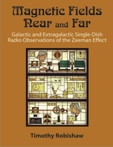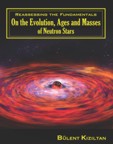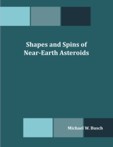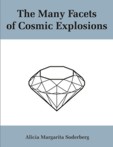LibraryAstronomy & Space Science

According to astrophysical theory, magnetic fields should play an important role in the structure and dynamics of the interstellar medium. While astronomical observations confirm this directly, the observational record is sparse. This is because magnetic fields can only be measured via polarimetric methods, and ...

The evolution, ages and masses of neutron stars are the fundamental threads that make pulsars accessible to other sub-disciplines of astronomy and physics. A realistic and accurate determination of these indirectly probed features play an important role in understanding a very broad range of astrophysical processes ...

We present the results of a large-area survey for millisecond pulsars (MSPs) at moderately high galactic latitudes with the 64 m Parkes radio telescope, along with follow-up timing and optical studies of the newly-discovered pulsars and several others. Major results include the first precise measurement of the mass of ...

Asteroids are diverse and numerous solar system objects, from the large number of objects in the main asteroid belt to the relatively small near-Earth population. Understanding their physical properties is essential to understanding the evolution of the solar system, and asteroid morphology is a complex field in its ...

The dissertation presents the results of a multi-epoch very long baseline interferometric study of water masers located in the extended atmospheres of evolved stars. The research was performed using the Very Long Baseline Array and Very Large Array of the National Radio Astronomy Observatory. Optical monitoring of the ...

Neutron stars are invaluable tools for exploring stellar death, the physics of ultra-dense matter, and the effects of extremely strong magnetic fields. The observed population of neutron stars is dominated by the >1000 radio pulsars, but there are distinct sub-populations that, while fewer in number, can have ...

Over the past few years, long-duration gamma-ray bursts (GRBs), including the subclass of X-ray flashes (XRFs), have been revealed to be a rare variety of Type Ibc supernova (SN Ibc). While all these events result from the death of massive stars, the electromagnetic luminosities of GRBs and XRFs exceed those of ...

We study the properties of star-forming galaxies at redshift z~2, an era in which a substantial fraction of the stellar mass in the universe formed. Using 114 near-IR spectra of the H-alpha and [N II] emission lines and model spectral energy distributions fit to rest-frame UV through IR photometry, we examine the ...

The various possibilities for the origin ("progenitors") of gamma-ray bursts (GRBs) manifest in differing observable properties. Through deep spectroscopic and high-resolution imaging observations of some GRB hosts, I demonstrate that well-localized long-duration GRBs are connected with otherwise normal ...
